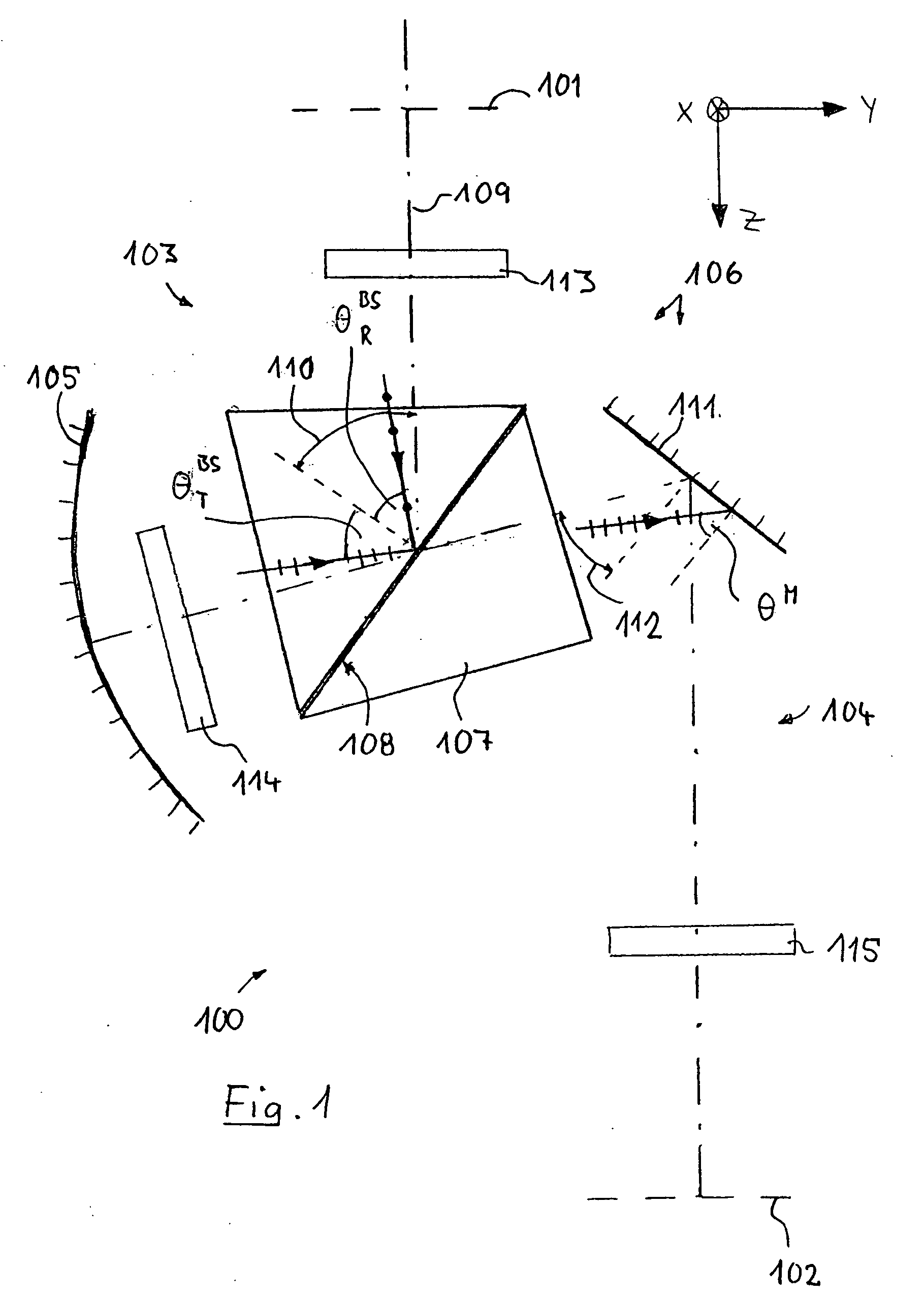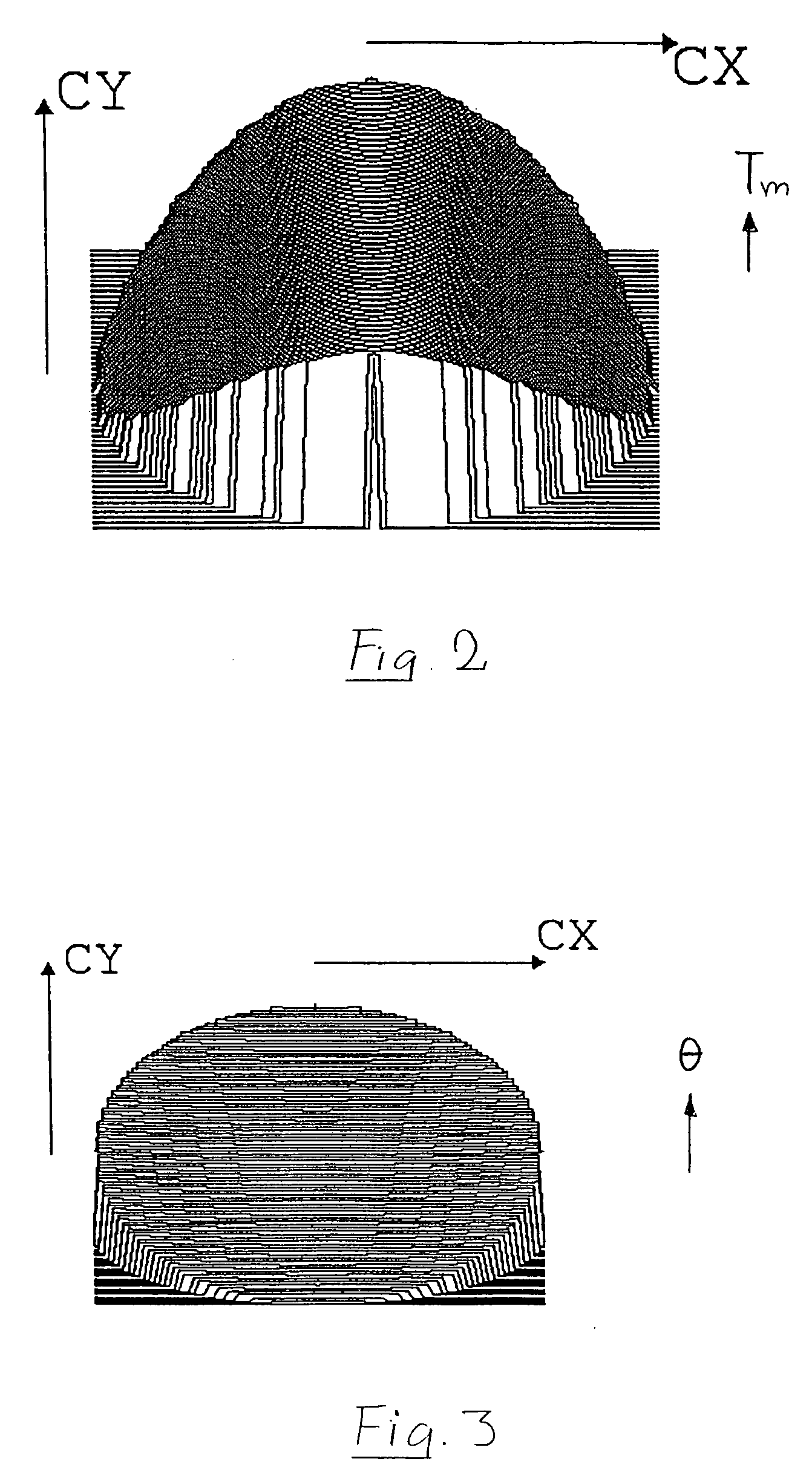Method for making an optical system with coated optical components and optical system made by the method
a technology of optical components and optical systems, applied in the direction of photomechanical treatment, instruments, polarising elements, etc., can solve the problems of non-uniform intensity distribution, problem area may occur, non-uniform intensity over field and pupil
- Summary
- Abstract
- Description
- Claims
- Application Information
AI Technical Summary
Benefits of technology
Problems solved by technology
Method used
Image
Examples
Embodiment Construction
[0066]FIG. 1 schematically shows the construction of an embodiment of a catadioptric reduction objective 100 according to the invention. It serves, at an operating wavelength in the deep ultraviolet range of approximately 157 nm, for imaging a pattern of a reticle or the like arranged in the object plane 101 into the image plane 102 on a reduced scale, for example with the ratio 4:1, with exactly one real intermediate image being generated. The projection objective has, between the object plane and the image plane, a catadioptric objective part 103 and behind that a purely dioptric objective part 104. The lens of the objective parts which serve for imaging are not illustrated for reasons of clarity.
[0067] The catadioptric objective part 103 comprises a concave mirror 105 and a beam deflection device 106. The beam deflection device comprises a physical beam splitter 107 with a polarization-selective beam splitter layer 108, which is formed by a multilayer interference layer system m...
PUM
 Login to View More
Login to View More Abstract
Description
Claims
Application Information
 Login to View More
Login to View More - R&D
- Intellectual Property
- Life Sciences
- Materials
- Tech Scout
- Unparalleled Data Quality
- Higher Quality Content
- 60% Fewer Hallucinations
Browse by: Latest US Patents, China's latest patents, Technical Efficacy Thesaurus, Application Domain, Technology Topic, Popular Technical Reports.
© 2025 PatSnap. All rights reserved.Legal|Privacy policy|Modern Slavery Act Transparency Statement|Sitemap|About US| Contact US: help@patsnap.com



